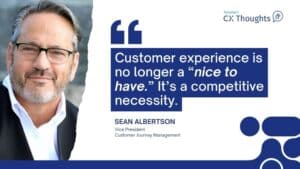
Have you ever wondered what’s the role of your audience in research? Can you identify when an audience choice has been a mistake? QuestionPro is here to help you understand the role of audience research in your data collection process.
Audience research seeks to answer a variety of business questions, such as how customers feel about existing products, what interests them, who influences them, what problems they have, and their opinions about branding and service.
LEARN ABOUT: Behavioral Research
Companies can better communicate with their audience and incorporate their views and opinions into their products and services by conducting audience-understanding research.
What is audience research?
Audience research is the study of the people you’re trying to reach with your content. Without knowing who they are and what they want, it’s impossible to create content that will be effective. That’s why audience research is essential and should be part of every marketing strategy.
Companies have different audiences—for example, customers (both existing and potential), employees, shareholders, suppliers, and partners. They also have different types of relationships with these audiences. For example, customers can be considered both customers (if they are buying your product) or stakeholders (if they provide feedback on your product).
That is why conducting audience research will help you better understand your customer experience, which will inevitably help you connect with them and help your company grow. It enables you to be customer-centric rather than product-led thinking, for example.
It’s also really helpful when making decisions. Audience research can help you prioritize how best to meet their needs or decide who to focus on, how to reach them, or what to offer them.
And if that’s not enough reason for you, audience research can also prove hypotheses generated from brainstorming sessions but not yet tested.
Audience Research Benefits
One of the main strengths of audience research is that you are confident that the campaign or claims you have published are directly relevant to your target audience, as they are from the demographics you aim for.
Hence, you are assured that, for instance, the product or service you are introducing or have modified will be well received by the target population.
Audience research can help you confirm your audience’s thoughts, emotions, and general ideas. Maintaining customer relationships is crucial, and audience research provides you with the feedback you require to meet customer needs.
The range of audience research techniques is an advantage as it allows you to completely tailor the research to your need. Detailed information can be obtained by going for qualitative research methods, whereas if you want statistics, then you can go for quantitative research.
Finally, audience research can be very time-efficient, depending on your chosen method. This can also be a weakness of audience research, as sometimes an audience may not be receptive to some products or services despite being in their demographics.
Audience Research Methods
There is a difference between qualitative and quantitative research. Qualitative research is used to establish the reasons why people do something or why they behave a certain way. In contrast, quantitative research is used to measure the frequency, duration, and intensity of behaviors.
LEARN ABOUT: Qualitative Interview
The most common type of audience research method is focus groups, where a group of people meet in one room and discuss their thoughts on an issue. The moderator leads the conversation and records it. This type of research can be conducted face-to-face or over the phone. Focus groups are often used to help create advertising campaigns.
An online poll is another form of audience research method that measures opinions or attitudes toward an issue or product by asking questions through various media, such as newspapers or online surveys.
Polls provide information about demographics such as age, gender, and income level. However, they do not reveal personal preferences or motivations behind those preferences as focus groups do. This happens because only one person’s opinion is being recorded rather than multiple perspectives within a group setting. This could lead to more meaningful results for marketers who want customer insights into customer behavior patterns.
With that data, they can better understand how to market products effectively in order to reach target markets more effectively than competitors do. To achieve this, they can use various marketing tactics, such as advertising campaigns through various media outlets, including television commercials.
There are several different types of audience research:
Primary research
Primary research involves direct contact with potential customers via methods such as interviews or focus groups. Engaging with members of your target audience allows you to gain essential firsthand knowledge of their preferences, wants, and habits.
These interactions enable you to conduct audience screenings and get feedback on certain products, services, or marketing initiatives. By conducting primary research, you can obtain in-depth knowledge of your audience’s motives and customize your offers to fit their expectations.
Secondary research
Secondary research focuses on previously released market audience analysis reports or studies completed by industry experts. These audience analysis findings reveal what similar companies or competitors do to achieve their target audiences. Examining their methods, message, and techniques might provide you with useful benchmarks and inspiration for tropicalizing your audience.
Secondary research allows you to harness other people’s expertise and experiences, uncover successful techniques, and adapt them to your specific audience and market. It gives you a better insight into the market and allows you to make more educated decisions about your marketing and communication activities.
Observation
Observation is the process of watching how people engage with similar items or services in person or online. By studying their behaviors, reactions, and usage patterns, you can acquire significant audience insights into their preferences and decision-making processes.
In-person observations provide direct observations of client behavior in real-world settings, whereas online observations allow you to watch and evaluate how people interact with products or services online. This form of research enables you to find trends, pain points, and opportunities for improvement, allowing you to optimize your offers and modify your marketing efforts accordingly.
How to Conduct Audience Research
You must decide what you want to learn to succeed at Audience Research. Are you trying to find out how people feel about a new product, or do you want to find out what type of music they like? Are you trying to understand why people are buying your brand, or do you want to know their shopping habits?
What you answer here will shape everything that follows: the survey’s design, the questions’ wording, and even how many people you need to survey.
It’s also essential to be clear about the research aims and what you want to get out of the research. Without this, it’s easy for surveys to get carried away with “while we’re there, let’s ask them this” questions.
In this case, you’ll end up with valid results, but it might not give you any usable insight—it might replicate things that were already known or not needed in the first place. Adding extra “want-to-know” questions also risks diluting respondents’ concentration (and thus response quality).
Good stakeholder management can be an antidote here—as can the ruthless application of “So what if I know this?”
1. Ask the right questions
Ask yourself, what am I ultimately trying to achieve? What do I need to know to make a difference in what I’m already doing or aware of?
For example, if your business is losing customers because they’re not being engaged in the right places at the right times, you might ask:
- What are my customers’ needs?
- What do they want from me?
- How can I make sure we meet their expectations?
2. Identify your audience to ask the right questions
If you want to get a true picture of what your potential customers think about your product or service, it’s important to make sure you’re asking the right questions.
For instance, if an independent school asks those who don’t have children about their views on school entrance criteria and the appeal of extracurricular activities, it will give irrelevant results. That group will not be making decisions about which school to attend; hence they’ll end up with the opinions of people who have little influence over the final decision and design marketing collateral to appeal to the wrong people.
On the other hand, if an independent school asks parents whether they would consider sending their child there if they had one or more children already enrolled at the institution, then this question would provide valuable insight into whether that particular customer base might be interested in sending their kids there.
3. Recognize the strengths and disadvantages of your research
The main strength of audience survey research is that you trust the data is directly relevant to your target audience, as they are from the demographics you aim for. Hence, you are assured that, for instance, the product or service you are introducing or have modified will be well received by the target population.
Another positive is that it helps to confirm somewhat your audience’s thoughts, emotions, and general ideas. Maintaining a relationship with your customer base is crucial, and in-depth audience research provides the feedback you require to meet customer needs.
The main weaknesses are that sometimes it can be difficult to collect data from this demographic because it may not represent the entire audience. In addition, there may be research bias regarding who chooses to participate in surveys which could skew results.
Conclusion
The process of Audience Research has many advantages, but it also guarantees the gathering of useful data that inevitably leads to better business decisions.
Audience Research allows you to gather information on what your customers want and how they want it delivered. You can also use this data to figure out who your audience is and how to reach them. It is a valuable tool for market research because it helps you understand what your audience wants in order to develop products or services that provide value in return.
LEARN ABOUT: Market research industry
Skipping this necessary step denies the opportunity to provide a deep understanding of how people interact with your brand or product, which helps you improve upon existing products or services as well as create new ones. It allows businesses to better understand their target market and make more informed business decisions because they have access to relevant data about their customers’ needs and wants.
QuestionPro Audience is one of the best audience research tools that will help you find your target audience.
Instead of struggling to figure out who your target audience is and how to reach them, QuestionPro will do the hard work for you. We’ll help you figure out who your ideal customer is and how you can get them interested in your product or service.
With QuestionPro Audience intelligence platform, you’ll never have to worry about where to start—with us, it’s all included! Request a free bid now!







